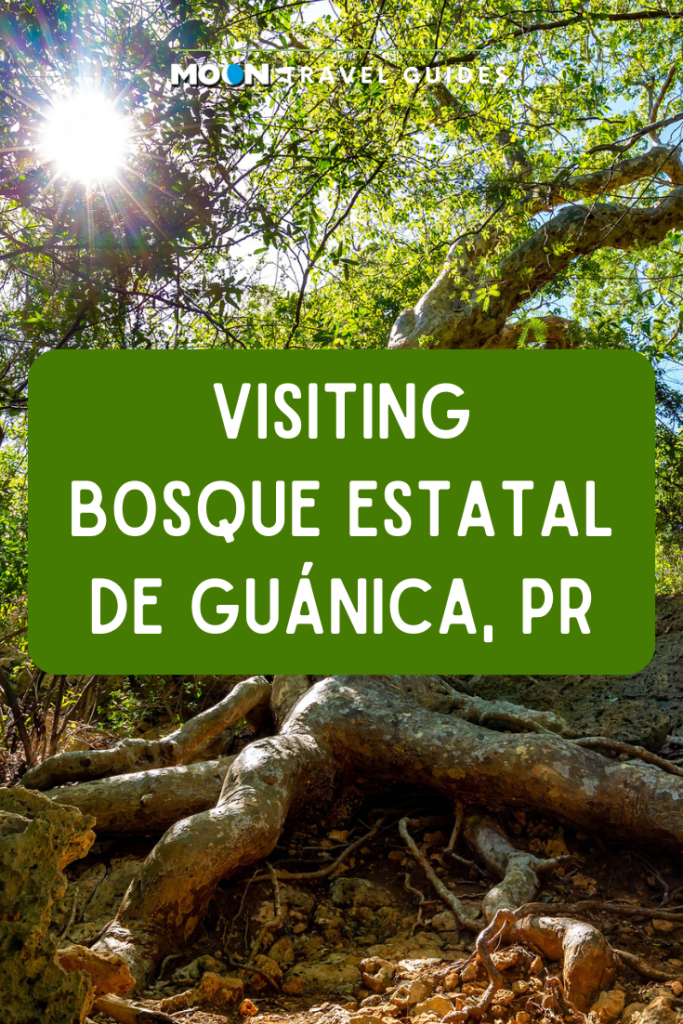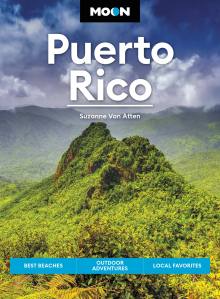Visiting Bosque Estatal de Guánica, Puerto Rico
The primary draw for visitors to Guánica is the astounding landscape of Bosque Estatal de Guánica. Located 7 kilometers (4 mi) east of Guánica, this 10,000-acre subtropical dry forest sits atop petrified coral reefs millions of years old and features a variety of environments.

Landscape and Wildlife
On the southern side you’ll find the dry scrub forest, featuring sun-bleached rocky soil, cacti, and stunted, twisted trees. There are also patches of evergreen forest along the upper eastern and western parts of the forest, where you can find Spanish moss, mistletoe, bromeliads, and orchids.
The rest of the forest has deciduous growth, where 40 percent of the trees lose their leaves between December and April. Agave and campeche trees, a source of red and black dye once exported to Europe for hundreds of years, are common to the area. Other flora among the forest’s 700 species includes prickly pear cactus, sea grape, milkweed, mahogany, and yuca. Be sure to avoid the poisonous chicharrón, a shrub with reddish piney leaves that can irritate the skin on contact.
Guánica is of special interest to birdwatchers. More than 80 species have been identified here, including the pearly-eyed thrasher, a variety of hummingbirds, the Puerto Rican mango, and the Puerto Rican nightjar, a bird that nests on the ground and remains nearly motionless all day until dusk. Other species of wildlife include the crested toad, a variety of geckos and lizards, land crabs, and green and leatherback turtles. Mongooses are also present in the area, having been introduced to the island many years ago to kill rats on the sugar plantations. The vicious little varmints are to be avoided at all costs.

Accessing the Forest
To access the forest from Guánica, travel north on PR 116, then turn right on PR 334 and travel 6 kilometers (4 mi) into the forest until you reach the parking lot and information center.
Hiking
There are nearly 60 kilometers (37 mi) of trails in the forest. From the main entrance off PR 334, follow the long, narrow road to the information center, where you’ll find the trailheads and where you can obtain trail maps and tips from the helpful English-speaking rangers. The most popular hikes include a moderate, 10-kilometer (6-mi) out- and-back trek to the ruins of Fuerte Capron, once a lookout for the Spanish Armada and the site of an observation tower built by the Civilian Conservation Corps in the 1930s; a 40-minute loop trail ideal for bird-watching; a 35-minute hike to see an ancient guayacán tree (either 300 or 1,000 years old, depending on the source); and a 2-hour hike to underground caves, which requires special permission from the information center and accompaniment by a guide.
If you’re planning to hike in the forest, be sure to wear sturdy shoes or hiking boots and bring a hat, insect repellent, sunscreen, and plenty of fresh drinking water.
Driving Tour
For a breathtakingly beautiful drive through the forest, take the PR 333 scenic route, which starts in the town of Guánica and traverses eastward for 10.5 kilometers (6.5 mi) along the southern rim of the forest. The curvy road snakes up the side of a steep incline that grows thick with cactus and bougainvillea. When the road crests, prepare yourself for a stunning bird’s-eye view of the ocean and Bahía de Guánica. Continue eastward and you pass the ruins of a Spanish lighthouse on the left. On the right is the Area de Pesca Recreativa, a shady, remote patch of beach and a fishing spot with no facilities except for one picnic shelter. The road leading to the recreation area is bumpy and deeply rutted, but it is possible to travel without a four-wheel drive if you proceed with caution.
Continue eastward along PR 333 and you encounter Balneario Caña Gorda (PR 333, km 5.8), a large, modest, shady public beach with bathrooms, covered picnic shelters, a roped-off swimming area, and a wheelchair-accessible area. The facilities are fairly worn but clean. Other features include a basketball court and lots of parking.
Proceed east 4 kilometers (2.5 mi) to the end of PR 333 and park your car. Walk 1 kilometer (0.5 mi) west to Bahía de la Ballena, a lovely sandy beach area and a great snorkeling and diving spot known as Submarine Gardens.
To reenter civilization, you’ll have to drive back the way you came. The whole drive can be done in 30 minutes or less, but you’ll want to allow extra time to linger at some of the attractions along the way.
Related Travel Guide
Save for Later


